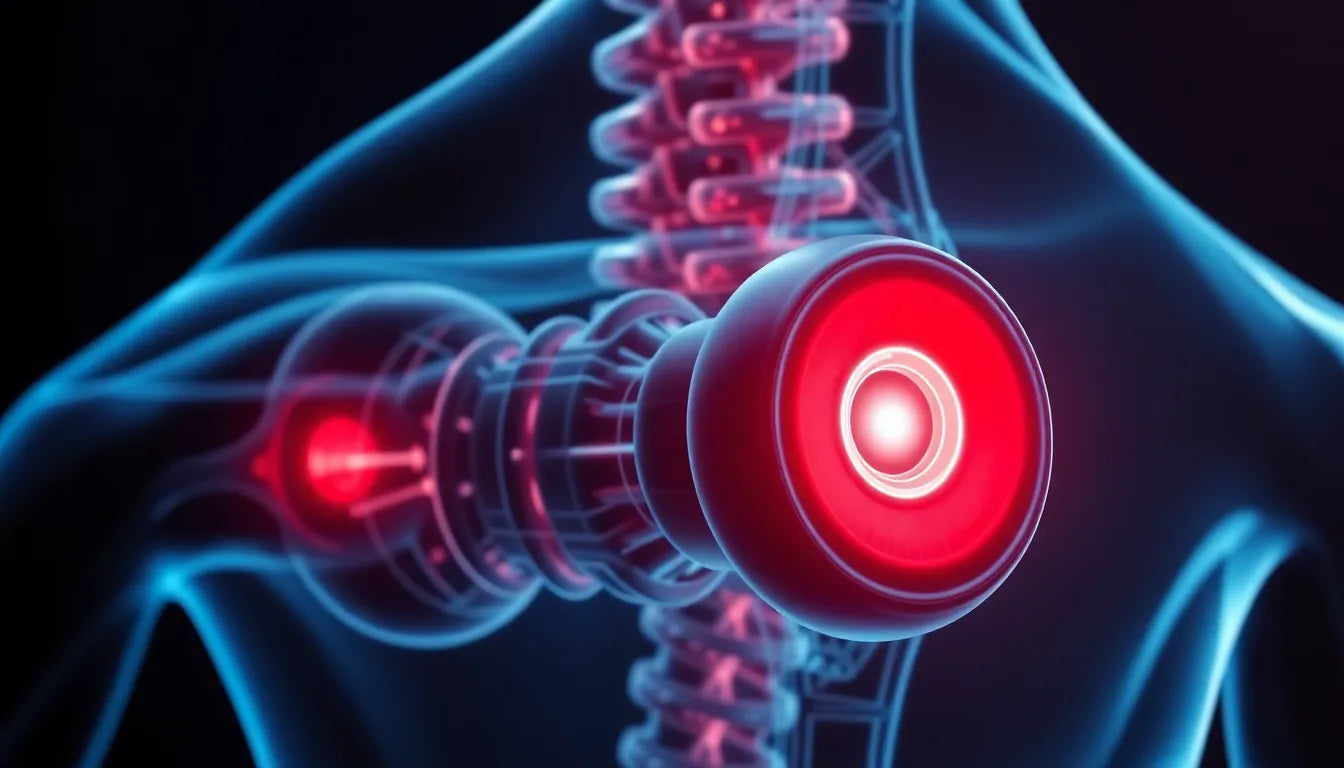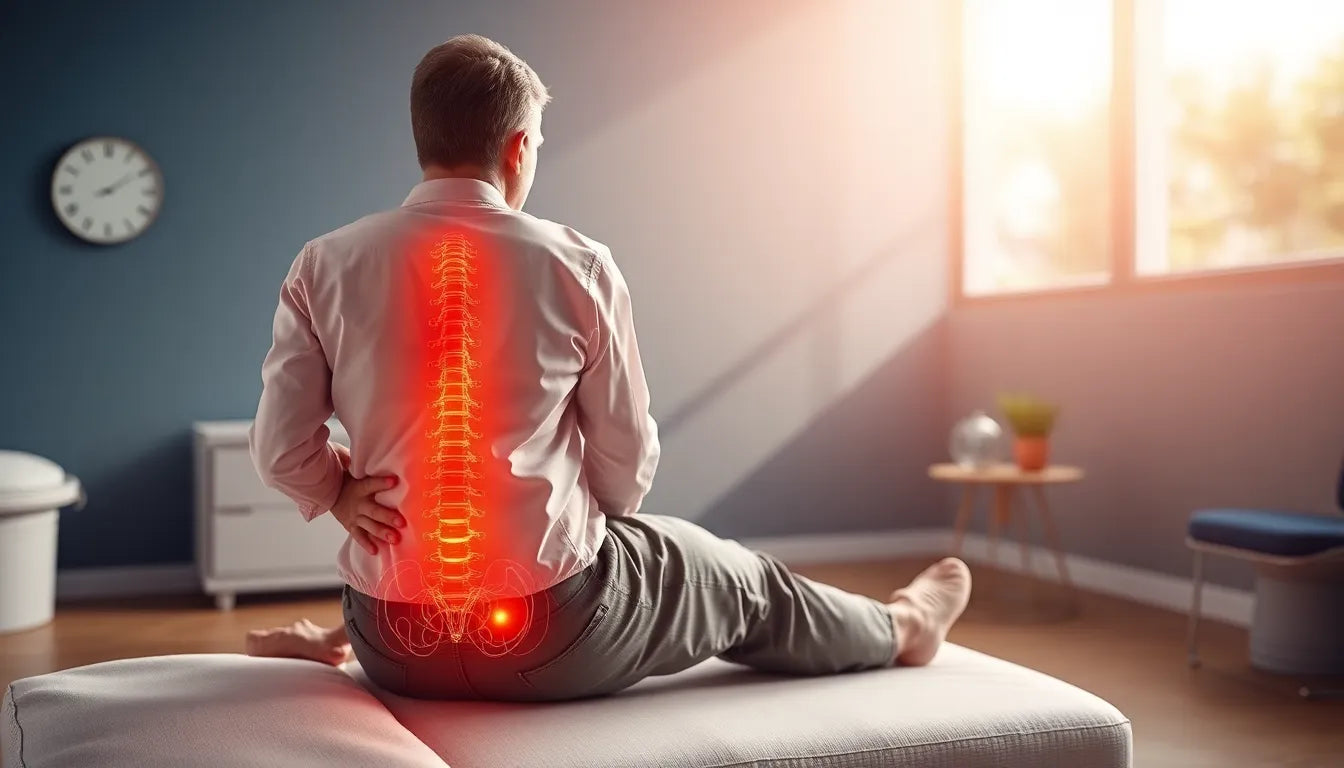Lower back pain is a common complaint that affects millions of people worldwide, disrupting daily activities and diminishing quality of life. For many, this discomfort is more than just an annoyance; it can be a symptom of an underlying condition known as a herniated disc. Despite its prevalence, the term "herniated disc" often remains shrouded in mystery for those who suffer from it.
Understanding the spine and intervertebral discs
The human spine is a complex structure composed of bones called vertebrae, which are stacked on top of each other to form the spinal column. Between each pair of vertebrae lies an intervertebral disc, which acts as a cushion to absorb shock and allow flexibility. These discs are made up of a tough outer layer called the annulus fibrosus and a gel-like center known as the nucleus pulposus. Together, they play a crucial role in maintaining spinal health and facilitating movement.
What is a herniated disc?
A herniated disc occurs when the nucleus pulposus pushes through a tear in the annulus fibrosus, often leading to pressure on nearby spinal nerves. This condition is particularly significant in the context of lower back pain, as it can cause a range of symptoms, from mild discomfort to severe pain that radiates into the lower extremities. Understanding this condition is essential for those experiencing persistent back pain, as it can greatly influence treatment and management strategies.
The purpose of this post
This blog post aims to demystify the concept of a herniated disc, providing a clear and comprehensive overview of its causes, symptoms, and effects on the lower back. By shedding light on this condition, we hope to empower readers with the knowledge needed to seek proper diagnosis and management. Addressing a herniated disc promptly can significantly improve one's quality of life, reducing pain and restoring mobility.
In the sections that follow, we will delve deeper into the anatomy and mechanics of herniated discs, explore the common symptoms and diagnostic methods, and discuss the impact on spinal nerves. Understanding these aspects is crucial for anyone experiencing lower back pain, as it can guide effective treatment and prevention measures.
What is a herniated disc in the lower back?
A herniated disc in the lower back, also known as a lumbar herniated disc, occurs when the nucleus pulposus, the gel-like core of the intervertebral disc, is displaced through a tear in the annulus fibrosus. This displacement can lead to the disc material pressing against nearby spinal nerves, which often results in pain and discomfort. The lumbar region, comprising the lower part of the spine, is particularly susceptible to herniation due to its significant role in supporting body weight and facilitating movement.
Recognizing the symptoms and diagnosis
The symptoms of a herniated disc in the lower back can vary widely, but common signs include a burning or stinging pain that may radiate down into the buttocks, legs, and even feet. Individuals might also experience numbness, tingling, or weakness in these areas, which can significantly impair daily activities. In severe cases, a herniated disc can lead to a condition known as sciatica, where the pain follows the path of the sciatic nerve.
Diagnosing a herniated disc typically involves a combination of a physical examination and imaging tests. During the physical exam, a healthcare provider may check for muscle strength, reflexes, and sensitivity to touch. Imaging techniques such as magnetic resonance imaging (MRI) are often used to confirm the diagnosis, as they provide detailed images of the spine and can reveal the extent of disc herniation and nerve compression.
Impact on spinal nerves and overall health
When a herniated disc compresses spinal nerves, it can lead to a range of neurological symptoms, including pain, numbness, and muscle weakness. This compression occurs because the displaced disc material exerts pressure on the nerve roots that emerge from the spinal cord. In the lumbar region, this often affects the sciatic nerve, resulting in sciatica, which can cause debilitating pain and mobility issues.
The impact of a herniated disc on overall health extends beyond physical symptoms. Chronic pain can lead to emotional distress, reduced quality of life, and decreased productivity. Therefore, understanding and addressing the condition promptly is crucial for maintaining both physical and mental well-being.
Why the lower back is prone to herniation
The lumbar spine is particularly prone to disc herniation due to its structural and functional characteristics. As the lower back bears much of the body's weight and allows for a wide range of movements, it is subjected to considerable stress and pressure. These factors, combined with age-related degeneration of the discs, make the lumbar region a common site for herniations.
Statistically, lumbar disc herniations are more frequent than cervical herniations, which occur in the neck region. The symptoms of lumbar herniation often include lower back pain and sciatica, while cervical herniation may lead to neck pain and arm symptoms. Understanding these differences is essential for accurate diagnosis and treatment planning.
In the next section, we will explore the various management and treatment options available for herniated discs, as well as preventive measures to reduce the risk of recurrence. By taking a proactive approach to spine health, individuals can mitigate the impact of herniated discs and improve their quality of life.
Managing and treating herniated discs
When it comes to managing a herniated disc, a comprehensive approach is essential. Treatment options range from conservative methods to surgical interventions, depending on the severity of the condition. For many individuals, physical therapy plays a pivotal role in recovery. Tailored exercises can help strengthen the muscles supporting the spine, improve flexibility, and reduce pain. Additionally, medications such as nonsteroidal anti-inflammatory drugs (NSAIDs) can alleviate pain and inflammation, providing relief during the healing process.
In some cases, more invasive treatments may be necessary. If conservative measures fail to provide relief, surgical options like discectomy or laminectomy might be considered to remove or repair the herniated portion of the disc. It's important for patients to discuss these options with their healthcare providers to determine the best course of action based on their specific situation.
Preventive strategies for spinal health
Preventing herniated discs involves adopting lifestyle changes that promote spinal health. Maintaining good posture is crucial, as it reduces undue stress on the spine. Ergonomic adjustments at work, such as using supportive chairs and desks, can also help prevent strain. Regular exercise, including activities that strengthen the core muscles, enhances spinal support and reduces the risk of injury. Additionally, maintaining a healthy weight can decrease the pressure on the spine, further lowering the risk of disc herniation.
For those who spend long hours sitting, taking frequent breaks to stand and stretch can alleviate pressure on the lower back. Incorporating these preventive measures into daily routines can significantly contribute to long-term spinal health.
Insights from recent research
Recent studies have shed light on the underlying mechanisms of herniated discs, particularly the role of inflammatory mediators in pain generation. Research has shown that inflammation around the herniated disc can exacerbate pain and prolong recovery. Understanding these processes can lead to more targeted treatments that address both the mechanical and inflammatory aspects of the condition.
Advancements in imaging techniques, such as MRI, continue to improve the accuracy of herniated disc diagnoses. These developments allow healthcare providers to better assess the extent of the herniation and tailor treatment plans accordingly, enhancing patient outcomes.
Frequently Asked Questions
What are the symptoms of a herniated disc?
Common symptoms of a herniated disc include a burning or stinging pain that may radiate into the buttocks, legs, or feet. Individuals might also experience numbness, tingling, or weakness in these areas, which can affect daily activities. Recognizing these symptoms early is crucial for effective management.
How is a herniated disc diagnosed?
Diagnosis typically involves a combination of a physical examination and imaging tests. During the physical exam, a healthcare provider will assess muscle strength, reflexes, and sensitivity. Imaging techniques like MRI are used to confirm the diagnosis, providing detailed images of the spine and revealing the extent of disc herniation.
Can herniated discs heal on their own?
In many cases, herniated discs can heal over time with conservative treatments such as rest, physical therapy, and medication. The body's natural healing processes can reduce the size of the herniation and alleviate symptoms. However, the recovery time varies depending on the individual and the severity of the herniation.
What lifestyle changes can help manage a herniated disc?
To manage a herniated disc, consider making ergonomic adjustments in your workspace and incorporating regular exercise into your routine. Strengthening core muscles can provide better support for the spine, while maintaining a healthy weight reduces pressure on the discs. Practicing good posture and taking regular breaks during prolonged sitting can also help alleviate symptoms.


















